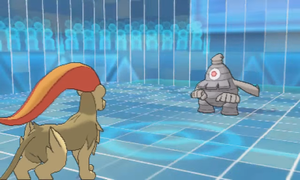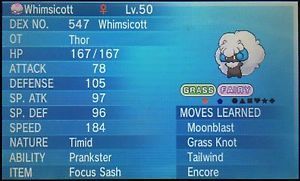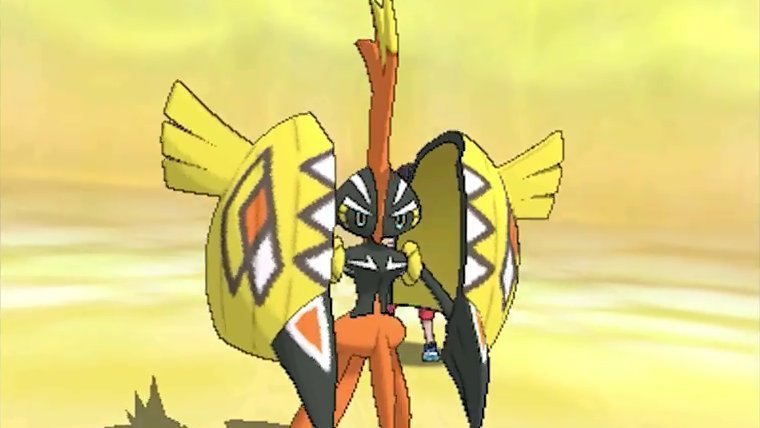The 2018 Pokemon World Championships are being held in Nashville, Tennessee this weekend, which means pro-level playing in both the card game (TCG) and the video game (VGC). It's an opportunity for Pokemon fans to see the best strategies players can come up with--the top players in both the trading card game and the video game compete for over $500,000 in prizes, and some of the matches can get pretty intense.
You can watch all the events now on Pokemon's official World Championships livestream. While the competitive TCG follows most of the usual rules you might be familiar with if you've played recently--and the casters explain complex strategies and unique cards if you aren't up to speed--the competitive video game involves rules and strategies you probably wouldn't use (or even know about) while playing the games normally. This is what you need to know to watch the best Pokemon video game playing you'll see all year.

The Basics
The official Pokemon video game championships are known as the VGC, and the 2018 series uses Pokemon Ultra Sun and Ultra Moon. The rules for this year include:
- A player’s team cannot contain two Pokémon with the same National Pokédex number.
- Pokémon may only use moves that have been learned through normal gameplay or from an official Pokémon event or promotion.
- Pokémon may have Hidden Abilities.
- Pokémon may use Z-Moves.
- Pokémon must have the black clover on their summary screen. [This is to check for hacked Pokemon.]
- Pokémon above and below Lv. 50 are permitted, but will be auto-leveled to Lv. 50 during battle.
- Ash-Greninja is prohibited from use.
- When Pokémon have a regional variant, either form may be used.
Additionally, many legendary and mythical Pokemon are prohibited. Notably, Kyogre, Groudon, and Rayquaza are banned--a welcome ban for those who were tired of their weather effects and the meta-game that sprung up around them in previous years. Mega Evolution is also back after last year's omission.
All competitive battles are double battles, meaning each player has two Pokemon out on the field at one time. Additionally, they're required to register a "battle team" of four to six Pokemon at the beginning of any given VGC event and can't change it, so they have to come prepared.
Before every battle, each player is given a 90-second preview of their opponent's battle team. Based on that preview, they then pick the four Pokemon from their team that they think will best counter their opponent's Pokemon. If all your Pokemon faint, you lose. Ties at the end of the time limit are broken based on how much HP each player's Pokemon have left.
Before The Battle
Much of what goes into competitive Pokemon happens before the battles themselves. Players spend a lot of time crafting teams that work well together--Pokemon that can effectively combo off of each other, counter popular Pokemon, and represent a variety of types and purposes. Rather than just use a bunch of strong attacks, VGC battles involve a lot of status and support moves that enhance the performance of already strong Pokemon. Usually, teams will be a mix of strong offensive Pokemon and support Pokemon with less-than-stellar stats but access to important moves or abilities.

For example, the move Trick Room reverses the priority on the field for five turns, meaning the slowest Pokemon move first. Attacking first can make or break a battle, and it's a great option for Pokemon with high attack or special attack stats but poor speed. If you're going to use Trick Room, you'd want most of the Pokemon you use to be on the slower side so that the team is compatible. On top of that, you wouldn't want your main attacker to use Trick Room; you'd teach Trick Room to a support Pokemon instead, since its purpose is to provide setups for stronger Pokemon to capitalize on.
In order to build these teams, pro players look at semi-hidden stats called individual values (IVs). IVs are assigned to Pokemon when they're caught or hatched from an egg, and they determine the max growth of each of their stats (HP, attack, defense, special attack, special defense, and speed). Players breed Pokemon to get the IVs that will work best for them, usually the highest IV in most stats. For the Trick Room example, though, breeding a Pokemon with the lowest possible speed IV would help ensure that it will be the slowest Pokemon on the field and therefore benefit from the effects of Trick Room.
Players also breed Pokemon to get specific natures, which increase the growth of one stat and decrease the growth of another. For the slow Pokemon, you might want a Brave nature, which increases attack and lowers speed. That way, you're making sure this Pokemon is really slow, but you're also giving it a boost so it can hit harder.

When breeding, players also look for the right ability--most Pokemon have two or three possible abilities, each with different benefits. Whimsicott, for example, is a support Pokemon that has access to Trick Room but a high speed stat, which normally wouldn't be ideal on a Trick Room team. However, one of its abilities is Prankster, which gives non-damaging moves priority. When up against a similarly slow team, that priority can often allow it to move first even under Trick Room, and it can then continue to provide support with its wide pool of non-damaging and status moves. You might decide that's too risky, though, and opt for Tailwind as a form of speed control instead--rather than reversing priority, it just increases priority on your side of the field.
Finally, after breeding the perfect Pokemon, players train them with a focus on effort values (EVs). You can get EVs in several ways, including battling, using items, and training in Poke Pelago. A limited number of EVs can be "invested" in a Pokemon's stats to increase growth for that stat. For the slow attacker, you'd invest the maximum EVs in its attack stat while making sure it doesn't have any EVs in speed.
After a pro player has caught, bred, and trained all their Pokemon, it's time to practice with that team and tweak it until the competition!
Watching Battles
Once you understand everything that goes into building a team, it becomes a lot easier to follow battles. Competitors aren't just trying to hit the hardest; they're trying to gain supremacy over the field in a number of ways, including speed control, weather, and generally making it difficult for the other player to execute their desired strategy. The fight for control is what makes championship-level battles so exciting.
This year's competitive scene is a combination of what we've seen in the last few years. Mega Evolution is back this year, and that makes for some hard-hitting, high-powered Pokemon. Also returning this year is Landorus, popular in previous years as an Intimidate user (an ability that lowers opponents' attack), and the Alolan Ultra Beasts, which can fit various roles on a team depending on what the player is using.
Legendaries Tapu Koko, Tapu Lele, Tapu Bulu, and Tapu Fini are also back with their terrain-changing abilities, which are activated when they enter the field. Each of the four types of terrain (electric, grassy, misty, and psychic) have certain effects. For example, Electric Terrain increases the power of electric-type moves and prevents sleep, and the popular Tapu Koko's Electric Surge ability introduces it. One way to counter it would be to send out another Tapu and introduce a different terrain. You'll definitely see plenty of Tapus when watching competitive Ultra Sun and Moon, so if you see a player switching their Tapu in and out, they're most likely trying to get the upper hand on the terrain.

Going back to the speed control example, someone using Whimsicott would lead with it in order to set up Trick Room or Tailwind and use Whimsicott's other support moves to disrupt the opponent's plan. VGC players often run Encore on Whimsicott, for example, which causes the target to repeat the last move it used for three turns. If the player can predict what that Pokemon might use--something like Protect, which isn't reliable when used multiple turns in a row--Encore can seriously hinder the opposing player's ability to do any damage or impose a strategy of their own.
At the 2016 World Championships, there was one battle toward the end of the weekend between two identical teams. This isn't uncommon in the VGC, in which only a select number of the 700-plus eligible Pokemon are considered "viable." Knowing how to effectively play those Pokemon gives players the edge, and throwing in a curveball Pokemon with a unique use or running uncommon moves on common Pokemon is another way to avoid being predictable. This year, the combination of a few previous years' metas makes for interesting team combinations.
When watching the official Pokemon VGC streams, you'll get some context from commentators about what's going on and which Pokemon are surprising or especially effective. For more details on which teams are most successful and why, you can check out the official Pokemon website. If you're interested in trying out competitive battles for yourself, Smogon is a great resource for movesets and team tips.
The Pokemon World Championships run until midday Sunday, August 26.

